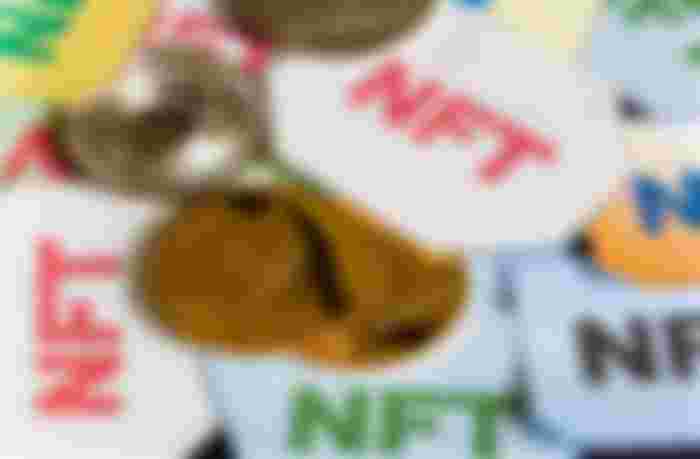What You Need To Know About Non-Fungible Tokens (NFTs)

In the first half of 2021, Non-Fungible Tokens have exploded above and beyond and opened up an entire internet era to an already smartphone-addicted human race. Non-fungible tokens are since transforming the world of art and entertainment.
But what are NFTs exactly? And how do they work? Why the hype? And the most important question of them all – are they here to stay?
What are NFTs?
NFTs are unique digital signatures for digital assets. The digital assets represent a tokenized version of real-world objects, such as art, music, video game items, GIFs etc. They use cryptography to encode the assets onto the tokens, which is the same technique used in cryptocurrency. Moreover, NFTs transactions are carried out using cryptocurrency.
Even though NFTs were first launched around 2014, it wasn’t until 2017, they started getting the attention of the mass population. In the initial months of 2021 alone, NFT sales managed to raise a total of $2.5 billion. Wild, right?
Due to their unique identifying codes, NFTs are one of a kind. On contrary to typical digital creations that are available in unlimited supply. Whereas, NFTs attempt to raise the value of the asset by attaching ownership to the object.
For instance, the art world’s most expensive NFT sale, Beeple’s “Everydays: The First 5000 Days” is a collection of digital artist Mike Winklemann’s works collaged together. The painting was auctioned at the reputed auction house of Christie’s at an unimaginable $69 million.
However, everyone on the internet is free to view the painting on their screens and perhaps, screenshot the piece and share it with their friends. Yet, they do not possess ownership rights. NFTs allow users to own the original piece. To collectors, owning the rights to the digital token of the one and only copy of the painting means a lot. Hence, they are willing to pay any sum of money for it.
Does this mean NFTs have a definite supply?
Of course not. NFTs do not halt production. However, it allows the artist or creator to decide whether they want to let only one original piece exist or they want to expand supply to cater to a wide audience. For example, to an artist, one original illustration is probably more precious. Anyhow, a musician would want to release at least a few copies to be distributed amongst their most dedicated fans.
How do Non-fungible tokens work?
Non-fungible tokens are distributed on a blockchain network. In case you’re not familiar with blockchain – it is a distributed ledger publicly transparent and spread across nodes of computers. Blockchain ensures that the transaction history of any digital asset, including NFTs, is recorded and visible to the public to verify authenticity.
Manipulating blockchain is extremely difficult, almost near to impossible. Therefore, editing or removing the contents inside an NFT or the timeline of an NFT is also impossible.
NFTs in particular are generally entertained on the Ethereum blockchain. Nevertheless, they are supported by all the other NFTs as well.
NFTs represent both tangible and non-tangible items including:
Art
Memes
Collectibles
Sport highlights
Videogame skins and rewards
Music
Sneakers; and more recently
Real estate
Even tweets made the list. For instance, Twitter co-founder, Jack Dorsey’s first-ever tweet was minted into an NFT and sold for over $2.9 million.
What does minting an NFT mean?

Minting is the cryptographic technology used to dissolve your creation into a blockchain network as an NFT. This in turn makes them unalterable. The unique data encoded in NFTs make the verification for authenticity extremely simple and prevents counterfeiting or fraud.
Moreover, creators and artists can even add their signatures in an NFT metadata and attach it with their work. Additionally, the owners can also store distinct information inside the NFTs.
What are Non-Fungible Tokens (NFTs) used for?
In addition to the security artists and creators experience while using NFTs, they also encounter more independence. With NFTs, they no longer have to rely on galleries and auction houses to display and sell their art. They are now free to create unapologetic expressions of art and sell them directly to an audience that feels connected to them. Artists can expand their market, as well as, exercise better money for their work. Furthermore, they enjoy royalties on resales. Meaning, they can earn commissions on their work every time it is sold to someone new.
Although NFTs have taken the art world by storm, they are still popular in other industries as well. Taco Bell has sold themed-art NFT and raised around $3,723. The 2011 “Nyan Cat” GIF was auctioned for nearly $600,000 in February of this year. Moreover, the iconic “Doge” meme of a Japanese dog was sold for a record-breaking $4 million.
NBA Top Shot has also generated over $500 million in sales from NFTs. Additionally, other celebrities like Paris Hilton, Eminem, Lindsey Lohan, and many more have created their own NFTs and made money through them.
How to buy NFTs?
Non-Fungible Tokens (NFTs) are brought and sold through cryptocurrency. Even though a few platforms let you buy NFTs using the card at first, you do ultimately have to convert it into ether using cryptocurrency.
First, you will have to mine some cryptocurrency. Of course, the most famous option is Bitcoin but there are several other options. Along comes a wallet. Popular wallets int he NFT world are MetaMask, Binance, CoinBase, etc.
After you are done creating your wallet, you have to successfully connect it to an NFT marketplace. For a marketplace, we personally recommend NFTically. Not only can you buy and sell your NFTs there for a minimal fee and exceptional user experience, but you can also create an NFT store for your brand and display it in front of a global audience.
Secondly, you have to pick and choose the NFTs you are interested in buying. Mine them using your wallet and then finally it will be added to your blockchain transaction history. Aka, you now own the NFT. The best part about NFTically is, you barely have to understand any of the above terminologies to carry them out. The platform makes it incredibly convenient.

